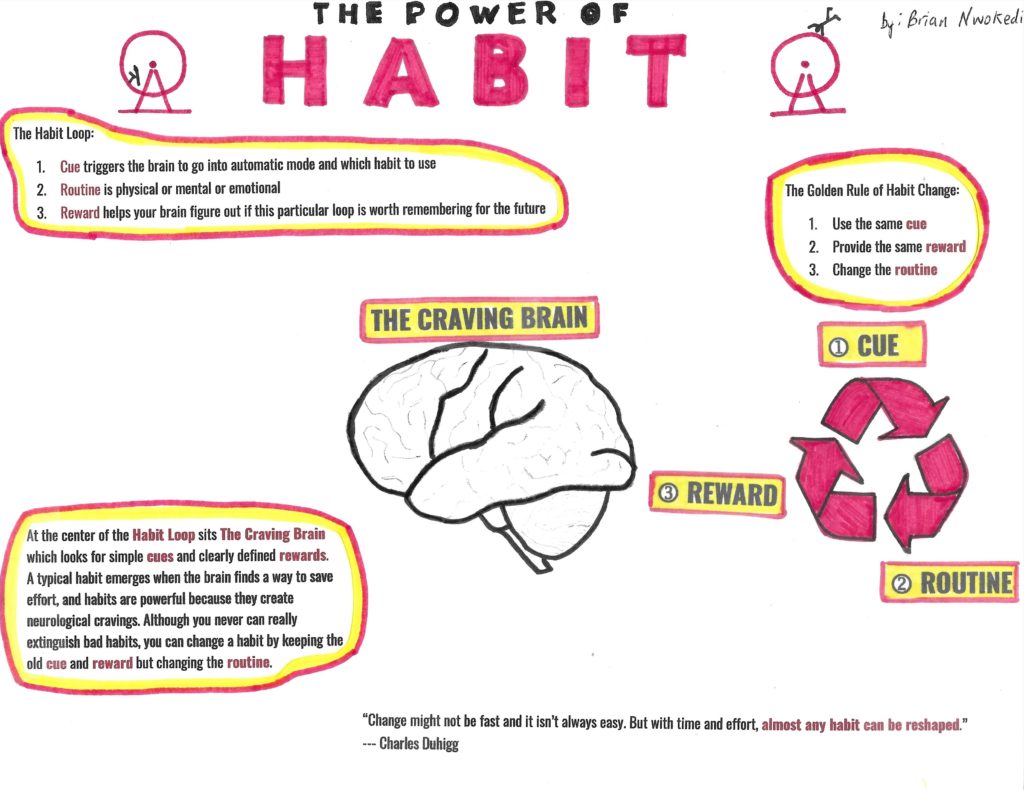"Change might not be fast and it isn't always easy. But with time and effort, almost any habit can be reshaped." --- Charles Duhigg, The Power of Habit (2012)
Summary
At the center of the Habit Loop sits the Craving Brain which looks for simple cues and clearly defined rewards. A typical habit emerges when the brain finds a way to save effort, and habits are powerful because they create neurological cravings. When a habit emerges, the brain stops fully participating in decision-making. Although you never can really extinguish bad habits, you can change a habit by keeping the old cue and reward but changing the routine.
Three-Step Loop
- A cue triggers the brain to go into automatic mode and which habit to use
- The routine is physical or mental or emotional
- The reward helps your brain figure out if this particular loop is worth remembering for the future
How To Change a Habit
By focusing on the keystone habit, you can fix a myriad of other habits in the process. You must work to identify cues and choose new routines in order to change your habits. But for habits to permanently change, people must believe that change is feasible.
In closing, to modify a habit, you must decide to change it. You must consciously accept the hard work of identifying the cues and rewards that drive the habits’ routines and find alternatives. You must know you have control and be self-conscious enough to use it.

The Extras
- How to Change a Habit Walkthrough by Charles Duhigg
- Charles Duhigg Talks @ TEDxTeachersCollege
